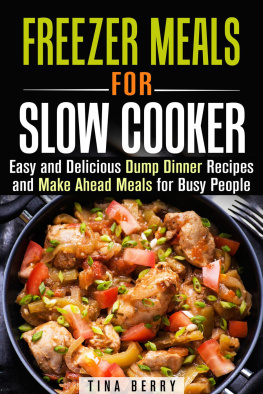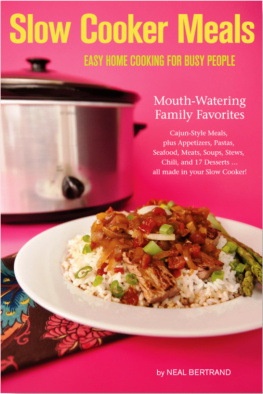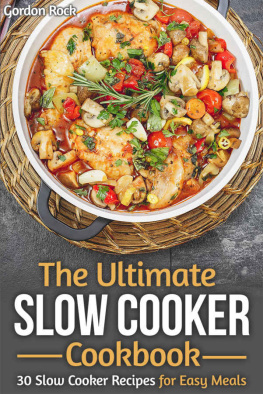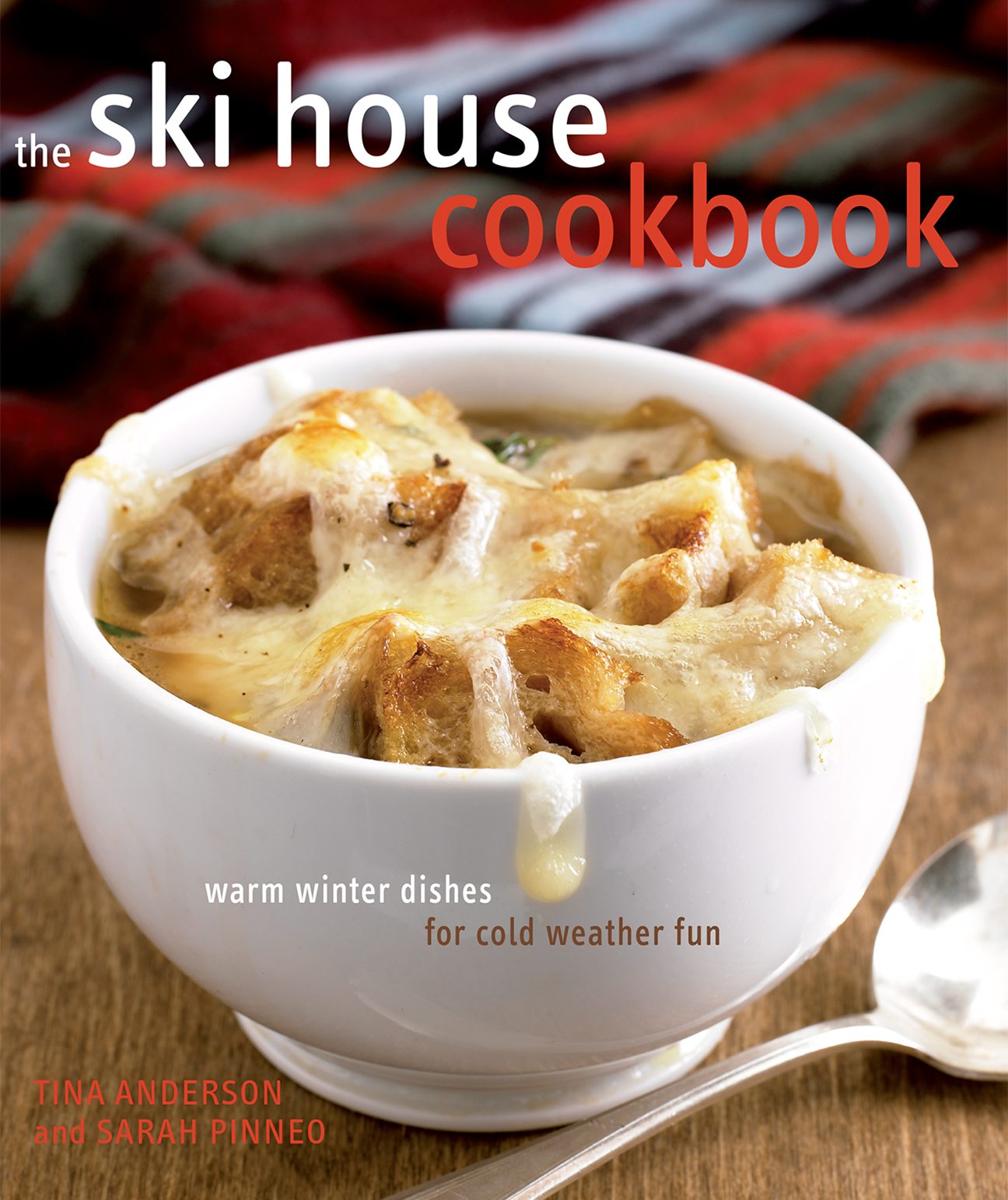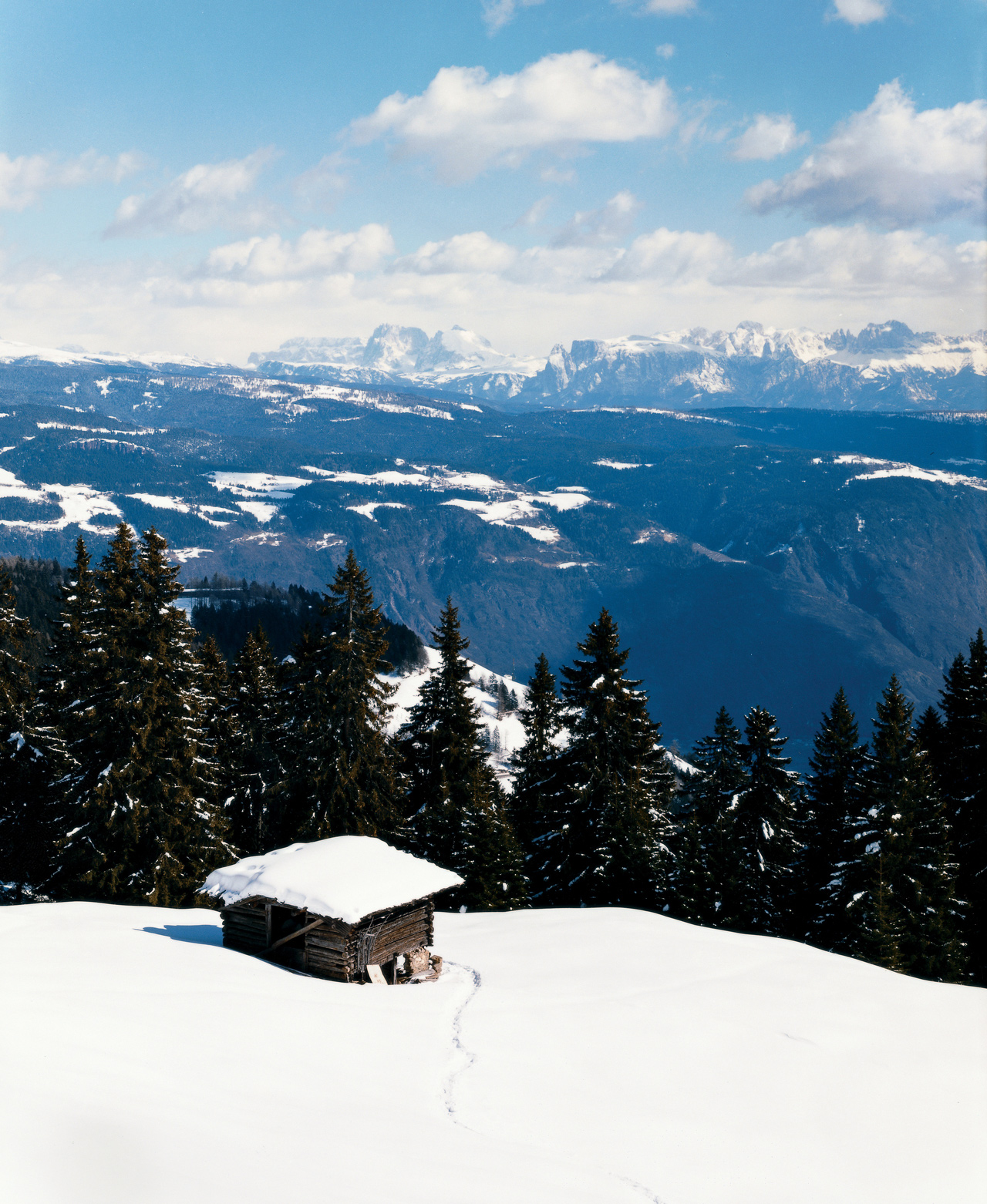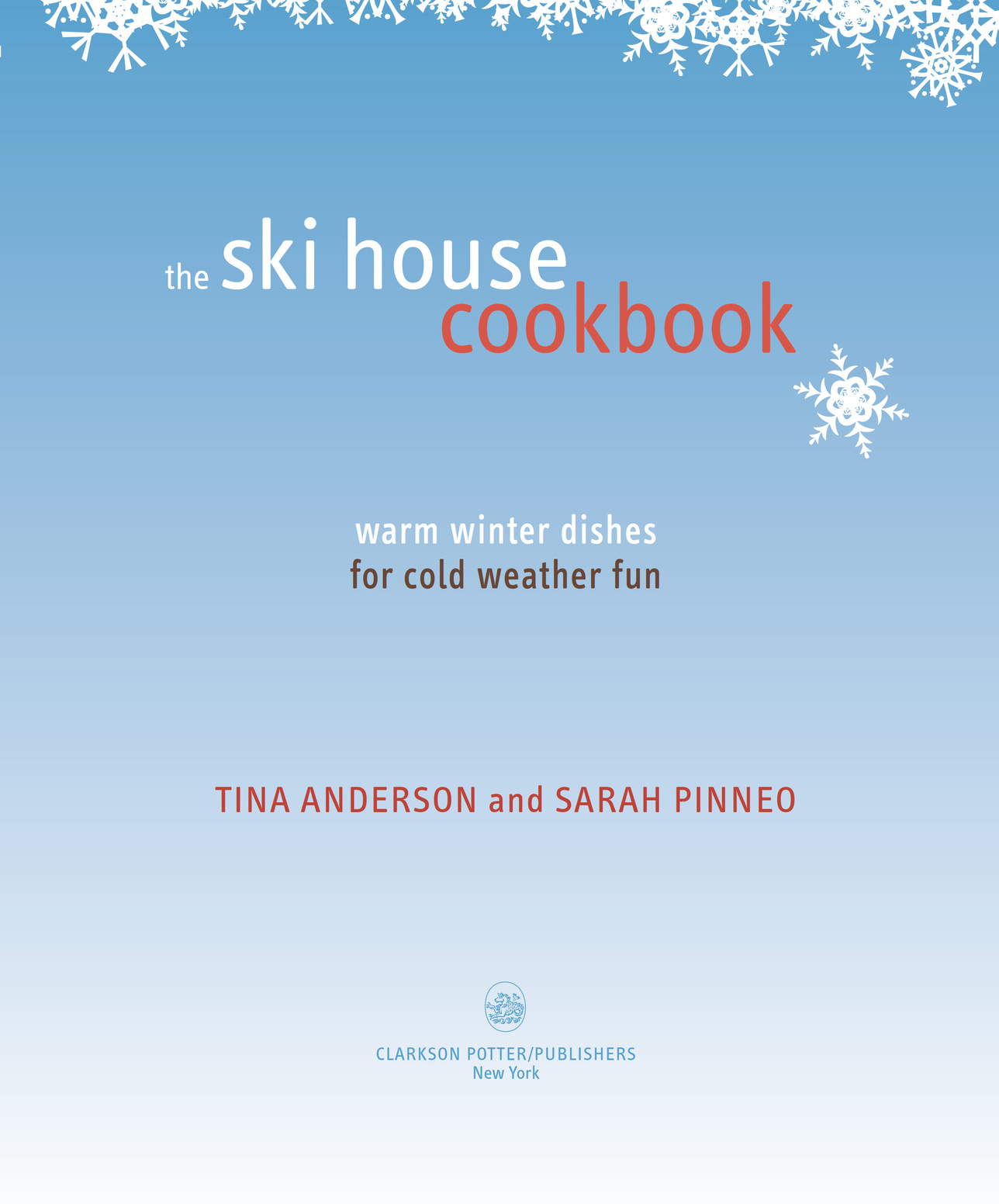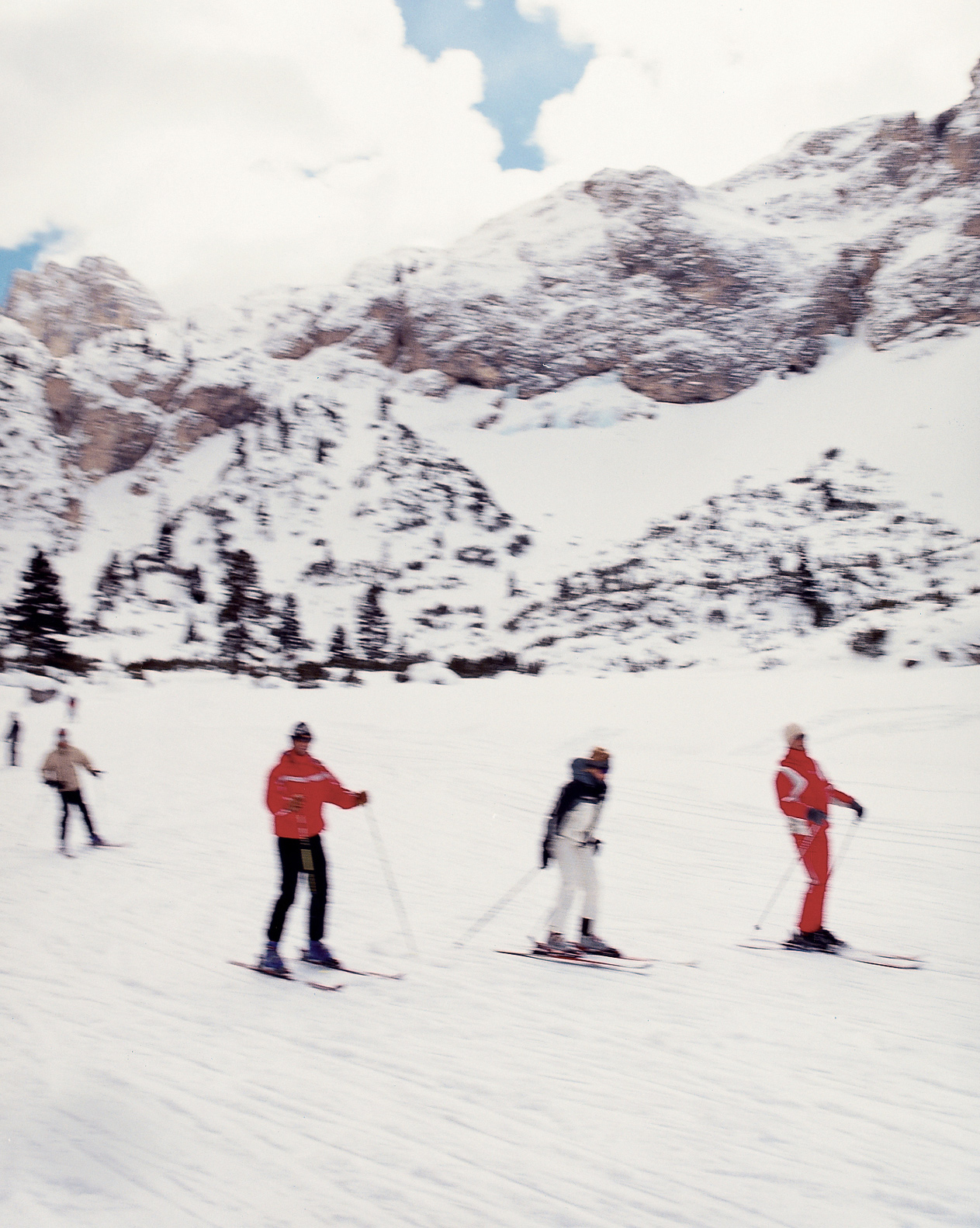Copyright 2007 by Tina Anderson and Sarah Pinneo
Photographs copyright 2007 by David Prince
Photographs copyright 2007 by Tina Anderson.
Photographs copyright 2007 by Rick Lew.
Photographs copyright 2007 by Victoria Yee.
Photograph copyright 2007 by Alexa Miller.
All rights reserved.
Published in the United States by Clarkson Potter/Publishers,
an imprint of the Crown Publishing Group,
a division of Random House, Inc., New York.
www.crownpublishing.com
www.clarksonpotter.com
Clarkson N. Potter is a trademark and Potter and colophon are registered trademarks of Random House, Inc.
Library of Congress Cataloging-in-Publication Data
Anderson, Tina.
The ski house cookbook: warm winter dishes for cold weather fun / Tina Anderson and Sarah Pinneo1st ed.
Includes index.
1. Cookery. I. Pinneo, Sarah. II. Title.
TX714.P5552007
641.5dc222006037002
ISBN9780307339980
Ebook ISBN9781524759742
Prop stylist: Christina Lane
Food stylist: Margarette Adams
v4.1
a
THANK YOU to our family, friends, and tasters for their unwavering support of our cooking endeavors. Thank you Mike, Jack, and Wyatt for eating braised pork shoulder four nights in a row. Special thanks to David Prince, Christina Lane, and Margarette Adams for helping us bring our recipes to life. Finally, thank you to our agent, Carla Glasser, for seeing the potential in us and in our idea, and to our editor, Rica Allannic, for taking a chance. And to all the skiers out there: Safety first!

WE GREW UP IN SNOW lots of itin Western Michigan. The average low temperature in January is 16 degrees, and lake effectgray clouds rolling off Lake Michigan and dumping their chilly contents onto the streets of our youthis more than a feature of the weather: It is a way of life. The landscape is, unfortunately, completely flat. Sometimes it seems the six months of winter are spent either waiting for the car to heat up or shoveling the walk.
Our love of winter was born when we found skiing. We discovered that the view from a mountaintop and a bit of the right gear could keep us outside for hours without feeling too cold. We learned that pointing our tips down the hill felt like flying, and that red cheeks and hat head were charming in the right venue.
We love to ski, and we also love to cook. And when we ski, we cook up a storm. Whats the link? First, were starved. There is something about breathing cold air all day and tearing around at great speed that makes for a healthy appetite. (Exercise specialists will tell you that skiing isnt terribly aerobic, since gravity does a lot of the work for you, but we know better.)
Another reason we cook is that wintertime demands that we celebrate our good fortune to spend the day outside with a restorative feast. While we dont think anyone really needs a grand excuse to sup on chili or wintry braised meats, tis the season.
Finally, there are practical matters. Finding a great meal in a ski town can be downright challenging. Unless youre someplace terribly cosmopolitan like Aspen, Colorado, or Park City, Utah, you may be skiing the terrain of champions but confined to less than regal restaurant choices. To put it nicely, many rural ski towns arent known for their haute cuisine. And if you are lucky enough to find yourself in a really swish locale, make sure youve got reservations and a fat wallet. When everyone in town is enjoying the same schedule, those fancy restaurants are packedand with demand outstripping supply, they can and do charge whatever they please.
Some of us have kids. Marching them all to a crowded eatery, waiting for a table, ordering carefully to accommodate little tastes, and sitting through dinner is sometimes more than we can bear. Theres always pizzabut in many places ordering a pizza is the culinary equivalent of being carried down the mountain on the ski patrol sled: If you can avoid it, you should.
For all these reasons, we deemed it necessary to bring you The Ski House Cookbook, with our version of the best ways to enjoy the culinary accompaniments to the downhill life. Having done a lot of ski house cooking, we have a few tricks to share. We like to eat as if weve spent the day in the kitchen without actually having done so. This can mean the slow cooker works hard all day so you dont have to, as in the case of our Mogul Beef Chili. Or it can mean preparing calzones ahead of time, freezing them, and popping them in the oven when we get home.
Luckily, many main-course foods taste best when they are cooked either very quickly, like steaks, or very slowly, like braised pork shoulder. Weve taken every possible advantage of this fact, not only for main courses but also for breakfast, lunch, snacks, side dishes, and desserts. Given the limited resources you might find in an underequipped ski house kitchen, no electric mixers, mandolines, or multiple pans are called for here.
Above all, ski house cooking should be easy. While we may love to dine upon duck confit with black truffle sauce, we dont consider fussy preparations requiring hard-to-find ingredients reasonable after a full day outdoors.
We rely on pantry items for ease of storage and because shopping opportunities are limited in many out-of-the-way towns. We wont send you to the local minimart for fenugreek. We also dont like to rely on out-of-season produce; while we love basil, for example, we prefer in this book to take advantage of ingredients associated with the colder months of the year. We use herbs and spices that dry well, but also the root vegetables and aged cheeses that really taste like wintertime.
Finally, ski house cooking should also be scalable; some of these recipes are a good choice for two, and some work for ten. This food is meant to be savored with family and friends, whether close family or a complete racing team.
The Ratings
We rate our recipes with a nod to ski trail ratings: green circles for the easiest, blue squares for those that are moderately difficult, and black diamonds for dishes that require a little more effort. We dont have any



